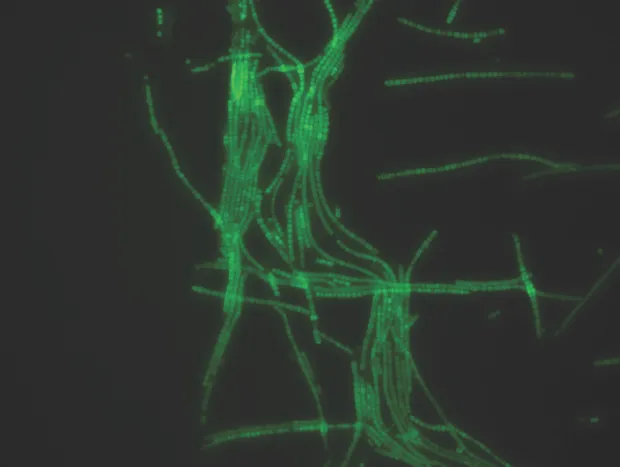There’s a new recipe for clean energy: take some cyanobacteria, add mushrooms, produce power. The correct combination of ingredients was discovered by researchers at the Stevens Institute of Technology in New Jersey, who were investigating ways to exploit cyanobacteria’s ability to generate electricity.
Cyanobacteria proliferate in Earth’s oceans and produce energy by photosynthesising sunlight. But we’ve so far been unable to exploit their energy-producing ability, because the microorganisms can’t live on the artificial surfaces needed to draw an electric current.
Mushrooms, however, naturally host a variety of microorganisms. Dr Manu Mannoor and Dr Sudeep Joshi, two engineers at the Stevens Institute, wondered if the fungi could provide the right habitat for the cyanobacteria to survive and produce electricity.

To test this, the pair used a 3D printer to print a network of electricity-collecting graphene nanoribbons onto a white button mushroom. Then they printed a spiral of ‘bio ink’ laced with cyanobacteria around the mushroom’s cap. Shining a light on the mushrooms activated the cyanobacterial photosynthesis, generating a photocurrent and allowing electrons to transfer through the membranes of the cyanobacteria to the conductive network of graphene nanoribbons on the mushroom’s surface.
“The mushrooms essentially serve as a suitable environmental substrate [that has an additional function] of nourishing the energy-producing cyanobacteria,” says Joshi. “We showed, for the first time, that a hybrid system can incorporate an artificial collaboration, or engineered symbiosis, between two different microbiological kingdoms.”
At this point, the amount of electricity the process produces is tiny, but Mannoor and Joshi have demonstrated that it can be boosted by packing the mushrooms together densely.
Follow Science Focus onTwitter,Facebook, Instagramand Flipboard